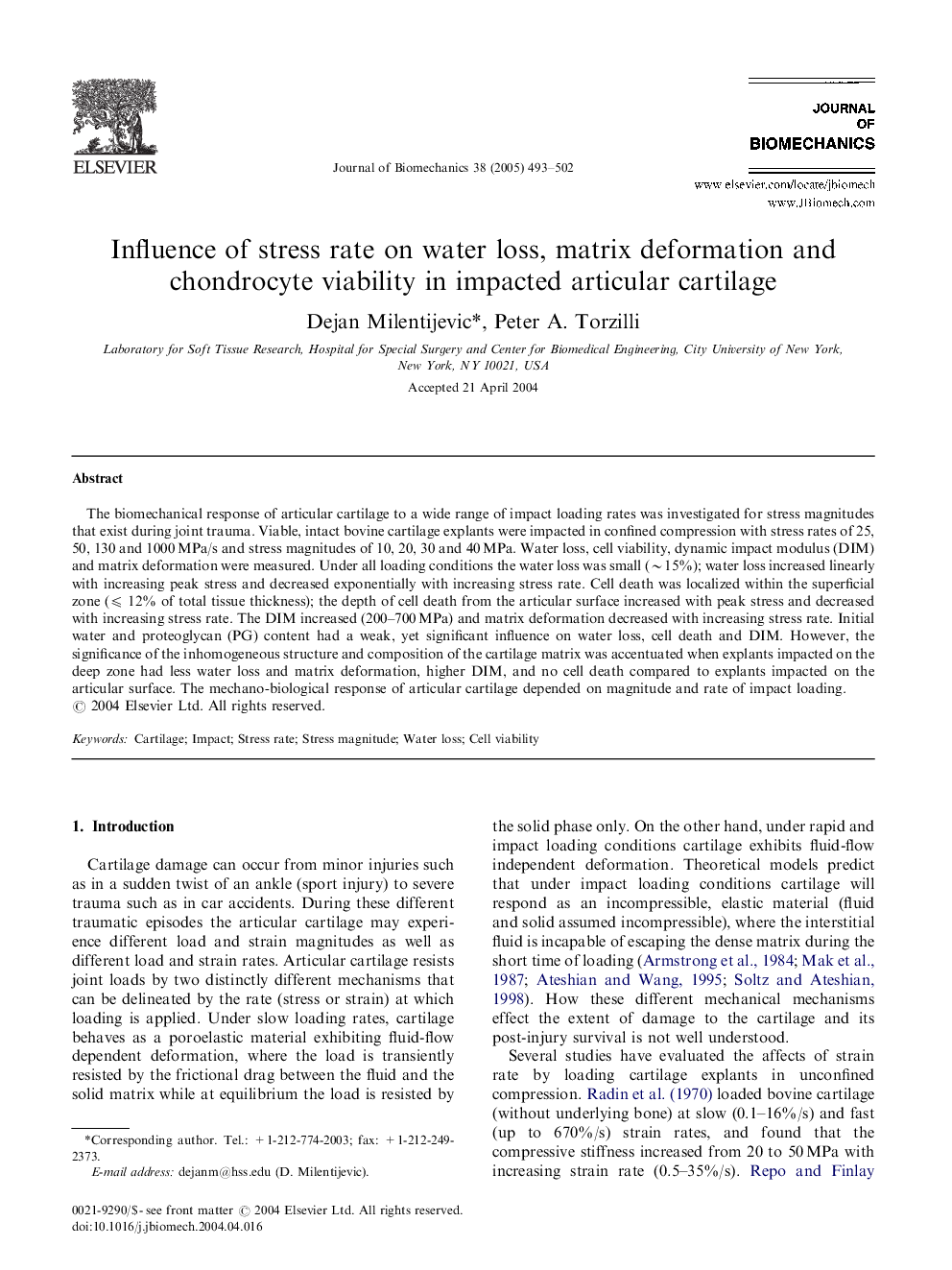| Article ID | Journal | Published Year | Pages | File Type |
|---|---|---|---|---|
| 10433715 | Journal of Biomechanics | 2005 | 10 Pages |
Abstract
The biomechanical response of articular cartilage to a wide range of impact loading rates was investigated for stress magnitudes that exist during joint trauma. Viable, intact bovine cartilage explants were impacted in confined compression with stress rates of 25, 50, 130 and 1000 MPa/s and stress magnitudes of 10, 20, 30 and 40 MPa. Water loss, cell viability, dynamic impact modulus (DIM) and matrix deformation were measured. Under all loading conditions the water loss was small (â¼15%); water loss increased linearly with increasing peak stress and decreased exponentially with increasing stress rate. Cell death was localized within the superficial zone (⩽ 12% of total tissue thickness); the depth of cell death from the articular surface increased with peak stress and decreased with increasing stress rate. The DIM increased (200-700 MPa) and matrix deformation decreased with increasing stress rate. Initial water and proteoglycan (PG) content had a weak, yet significant influence on water loss, cell death and DIM. However, the significance of the inhomogeneous structure and composition of the cartilage matrix was accentuated when explants impacted on the deep zone had less water loss and matrix deformation, higher DIM, and no cell death compared to explants impacted on the articular surface. The mechano-biological response of articular cartilage depended on magnitude and rate of impact loading.
Related Topics
Physical Sciences and Engineering
Engineering
Biomedical Engineering
Authors
Dejan Milentijevic, Peter A. Torzilli,
